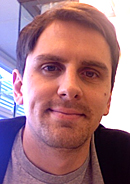Skin packed with mutations
A study from KTH shows that the skin saves many of the mutations produced by the sun each year. In the long run, there are an enormous amount of mutations and many years still remain before researchers will be able to determine exactly which mutations risk transformation into skin cancer.

"From the very first moment you start to sunbathe, your skin starts to develop mutations. My advice for the time being is not to sunbathe too much," says Patrik Ståhl, researcher at the School of Biotechnology at KTH.
It is particularly important that children do not spend too much time in the sun, he continues. They are still developing and growing physically.
"The mutation of a skin cell in a child will lead to the mutation being passed on to many more new skin cells compared to that of an adult," says Patrik Ståhl.
A KTH study was conducted that exposed seven people to a Swedish summer. It is the areas of skin that are chronically exposed to the sun’s rays that were inspected, i.e. under your arms, your face and the area below your neck, which is called the V region. Then cell samples were studied with the latest DNA sequencing technology.
"There is a remarkably large amount, as many as 35,000 new mutations per year in these areas, in just one of our 20,000 genes," says Patrik Ståhl.
He adds that the mutations are also saved in the genes which has proven to be of major importance in protecting against the development of cancer, which in itself is an interesting discovery. But the study has also provided Patrik Ståhl with a clearer and more detailed picture of how skin is constructed, something which is important for research. He is speaking of stem cells which continually ensures the growth of new skin.
At the same time, developments are moving forward. Within 10 to 15 years it will be fully possible for individuals to undergo a test to find out what the probability is of developing a certain type of tumour, for example skin cancer. Then those with a low risk of developing skin cancer would be able to spend more time in the sun than those with a high risk.
"With a considerably larger number of test subjects, we would be able to identify which mutations that develop in an uncontrolled manner and those that can lead to cancer. A future objective is to take a look at several individuals all of different ages and origins, in this way we will be a will to gather an overall picture" says Patrik Ståhl.
For more information, contact Patrik Ståhl adds 08 - 553 78 339 or patrik.stahl@biotech.kth.se.
Peter Larsson

